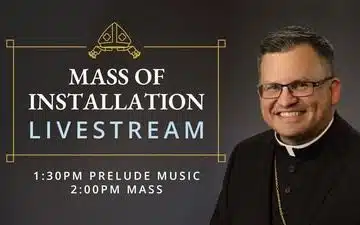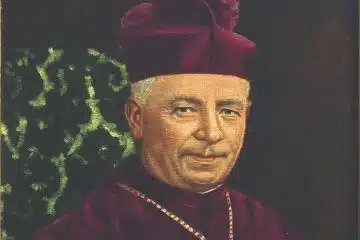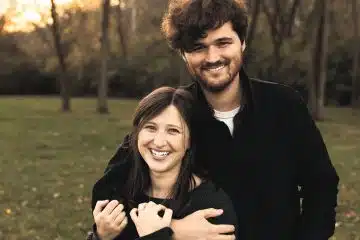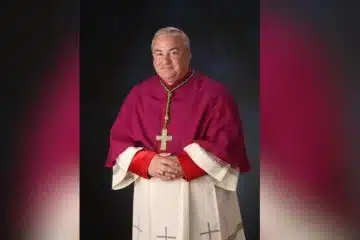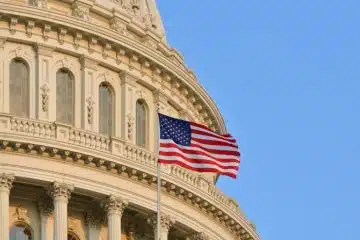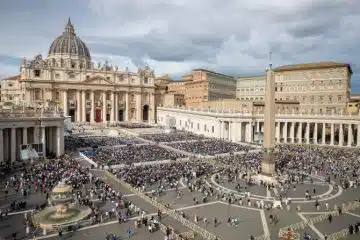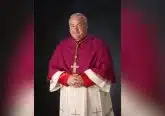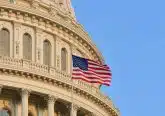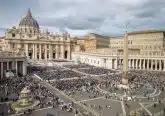Bishops celebrate Mass at historic black church to ‘convey solidarity’

IMAGE: CNS photo/Bob Roller
By Carol Zimmermann
BALTIMORE (CNS) — The U.S. bishops chose to break from tradition during this year’s fall assembly by celebrating Mass at the church known as the “Mother Church” of black Catholics in West Baltimore instead of the usual venue: Baltimore’s historic basilica.
“I pray our presence will convey the church’s solidarity with you,” said Baltimore Archbishop William E. Lori in opening remarks Nov. 14 to a few dozen parishioners attending the Mass with more than 250 bishops who filled nearly every pew of the small church.
In his homily, Archbishop Joseph E. Kurtz of Louisville, Kentucky, said the bishops came to the church “to be present, to see with our own eyes, so that we might humbly take a step and lead others to do so.”
Archbishop Kurtz, outgoing president of the U.S. Conference of Catholic Bishops, also said the bishops’ presence was just one part of an effort to bring about healing of racial divides. He acknowledged this effort would involve “more than simply a quick visit on a bus.”
The Nov. 14 Mass and other events around the nation such as prayer services to heal divisions, should “move our hearts to holy dialogue, grounded in respect,” he said, adding that it is something that needs everyone’s dedication.
“For violence to fall and civility to rise, everyone must do a part,” he said.
That message was not lost on parishioners who sat in the side pews or in metal folding chairs in the back of the church during the evening Mass in the church, which was built in 1888.
“The bishops wanted to be visual,” said community activist and parishioner Ray Kelly after Mass, who said their presence sent a message not just to this parish, but well beyond it.
“Coming here restored hope,” he told Catholic News Service, after taking pictures of some parishioners at the back of church after the Mass was over.
Longtime parishioner Iris Turner said seeing the nation’s bishops in the church where her great grandparents worshipped and where she has been firmly rooted since receiving her first sacraments was an experience that “filled my soul.”
Turner, who attended the now-closed parish school from first grade through eighth grade, as did a friend she sat by at the Mass, said she hoped the bishops’ visit “would put St. Peter Claver on the map.”
The bishops chose the church, named for the patron saint of slaves and ministry to African-Americans, to show support for parishes in neighborhoods that have seen rising violence. They picked the brick church — that sits across the street from boarded-up and windowless buildings — on the recommendation of the new task force of the U.S. bishops to promote peace in U.S. communities following the violence in the nation this summer after shootings of and by police officers in in Baton Rouge, Louisiana; Minneapolis; and Dallas.
Last spring, St. Peter Claver was in the middle of violent protests during riots where there was looting, multiple fires and buildings destroyed in response to the death of Freddie Gray, the African-American man who died a week after he was seriously injured while in police custody.
The church, a fixture in Gray’s neighborhood, was a site of prayer immediately after the riots. Its parishioners held community meetings at the parish center and were on the streets involved in cleaning up broken glass and debris.
Archbishop Lori, who led a prayer service at the church after the riots, told the bishops that St. Peter Claver’s parishioners were immediately at work to “reclaim the community.”
“This parish is that field hospital envisioned by Pope Francis,” he added.
Turner, who arrived at the Nov. 14 Mass after work, saying she wouldn’t miss it, is proud that her parish is such an integral part of the community. “We never moved out,” she said. “We’re still here feeding the homeless, visiting the sick.”
She is also optimistic that racism will not always exist. “I’m not hating,” she said, adding that she believes “God is walking on this earth” and “is in charge.”
At the end of Mass, parishioners did not rush out and head home but lingered in the pews talking before making their way through a side door to a reception at the parish hall.
Parishioner Pauline Fleming, wearing a maroon St. Peter Claver sweatshirt, was an exception. She wanted to greet bishops at the end of Mass so she left before the end of Mass walking right past a protester outside the church yelling into a megaphone about what he felt was wrong with the Catholic Church and its leaders.
He was joined on the sidewalk by a few other protesters standing by the buses waiting for the bishops who were holding banners in support of women’s ordination to the priesthood and saying the church should “stop persecuting gays.”
A man carrying the “stop persecuting gays” banner walked onto the altar with it during the homily and was escorted away.
Fleming, who had to speak loudly over the megaphoned protester said the Mass was “great for the city and for our parish.”
“It was a blessing,” she said, adding: “It’s hard to put into words.”
– – –
Follow Zimmermann on Twitter @carolmaczim.
– – –
Copyright © 2016 Catholic News Service/U.S. Conference of Catholic Bishops. www.catholicnews.com. All rights reserved. Republishing or redistributing of CNS content, including by framing or similar means without prior permission, is prohibited. You may link to stories on our public site. This copy is for your personal, non-commercial use only. To request permission for republishing or redistributing of CNS content, please contact permissions at [email protected].


